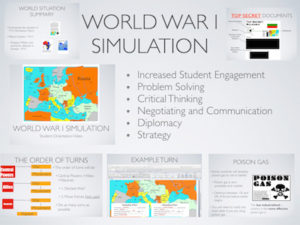What if I told you there were seven different ways of learning? Although that may seem like a very large number, it is true. There are seven different ways of learning, each one different from the next. The seven different ways include visual learning (through pictures and imagines), auditory (through sound and music), verbal (through words, both in writing and speech), kinesthetic (through body, hands, and sense of touch), logical (through logic and reasoning), social (through learning in groups or with other people), and solitary (through working along and using self-study). Like I said before, each of these learning types are different from the next and each bring forth a different way of learning things.
Everyone knows what type of learning style is best for them. Whether that be through flashcards, reading over text or listening to something being read aloud, we all know what works for us. But I believe is it imperative to know and be able to learn through different methods. By being able to learn in different ways, that may better help a student understand and have the ability to better adapt to the different teaching styles that each of their teachers may present. Mr. Harms does just this through the History Simulation Games.
The History Simulator that Mr. Harms has designed presents students with a creative and whole new way of learning history. Anyone can read about a war in a textbook, take some notes, and understand the basic concepts enough to get a passing grade. But the History Simulation Games takes that student who does just enough to get by and puts them in a situation where they have to think, interact, and strategize to win a war. The History Simulator that Mr. Harms designed challenges students to learned in not just one of the seven ways but in all of the seven ways. Now I can imagine what you are thinking, how is it possible to have one game but seven different ways of learning? Through the History Simulation Games, it is possible. Students use the visual way of learning to look at the interactive war maps, seeing the change that happens in each country as the war progresses. Students use the auditory way of learning when Mr. Harms stands up at the beginning of class and gives an announcement. For example, during WWII, Mr. Harms took time at the beginning of class to read the Zimmermann note. Students had to listen to what was said and then think how that might affect their country or their strategy to win the war. Verbal learning is also done through the simulations because students are required to write a summary of what their country did each day, challenging them to know how to effectively communicate their thoughts. There is one simulation, the Imperialism Simulation, that students use the kinesthetic way of learning. Students take turns rolling dice for their country in order to obtain their objectives. Logical learning is a very large part of the History Simulation Games because students have to know how their moves will affect what happens in the future, not only with their country but all the other countries involved in the war. The social and solitary types of learning are done through the simulations by having to direct what a country does by yourself but then having to communicate with the other countries who are fighting on the same side as you. For example Germany has to be able to communicate the Axis Powers during WWII.
Now although the History Simulations many not replace the textbook and note taking type of learning, the Simulations provide students with the ability to use the seven different types of learning. With the History Simulation Games, students get the opportunity to learn about world history in a new way and without realizing it, the students are learning how to communicate and challenge themselves to learn in a new way each and every day.

